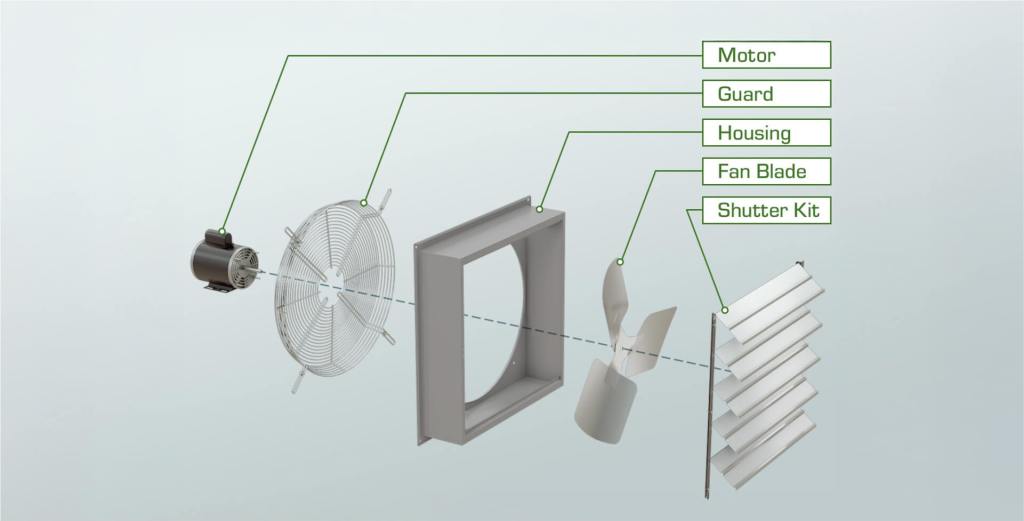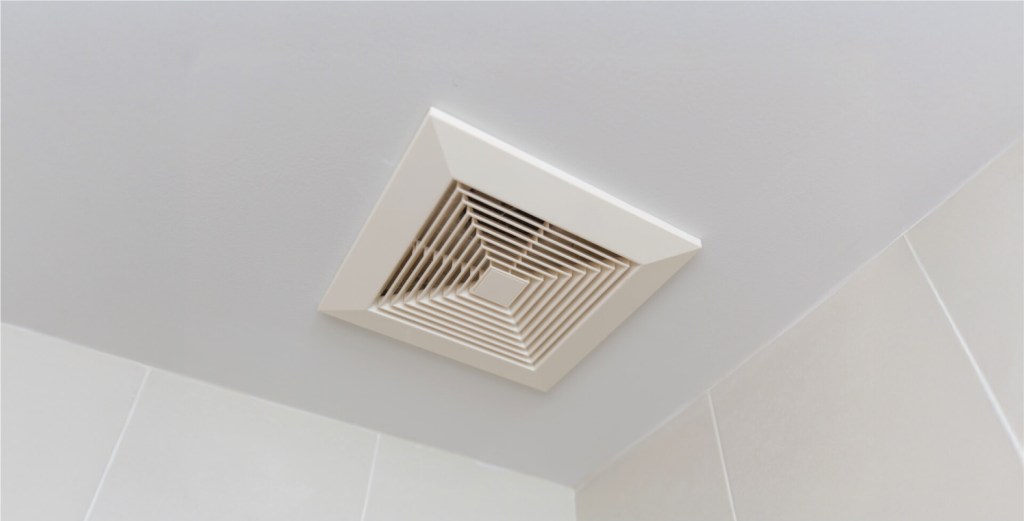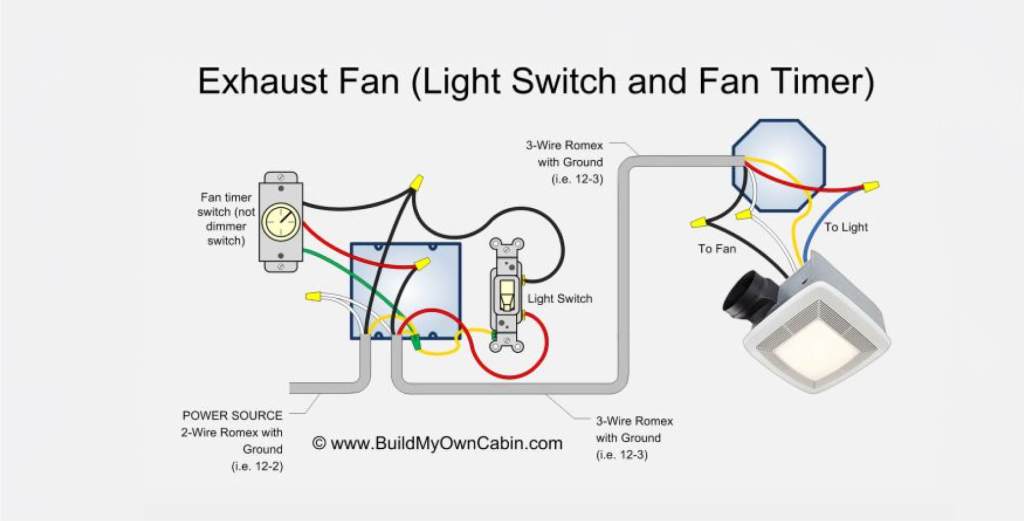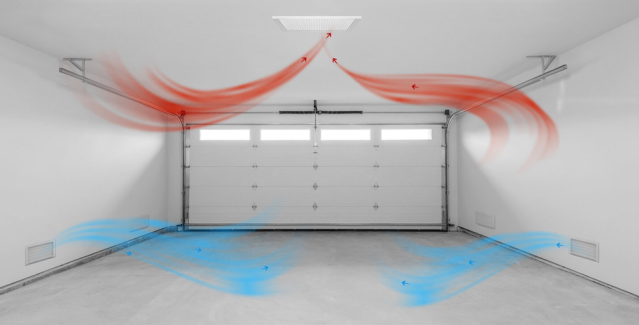Is your garage feeling stuffy, hot, or smelling like a locker room after a football game? If you’re tired of breathing in fumes and sweating like a sinner in church in your garage, it might be time to improve your garage’s ventilation by installing a garage exhaust fan.
A good exhaust fan can make quite a difference, no matter what you use your garage for.
This guide explains how to install an exhaust fan in your garage in five steps. We’ll discuss the different types of fans, how to choose the right size, and provide step-by-step instructions for a successful DIY installation. We’ll also help you decide if a garage exhaust fan is right for you and your needs.
What is a Garage Exhaust Fan?
You might think, “Isn’t a fan just a fan?” Well, not exactly.
A garage exhaust fan is a special kind of fan designed to suck out bad garage air and replace it with fresh air from outside.
These fans tackle common garage problems related to poor ventilation, such as:
- Exhaust fumes from your car or lawnmower’s exhaust pipe
- Stuffiness and bad smells
- Dust and allergens
- Mold and mildew
How Does an Exhaust Fan Work?
A garage exhaust fan works similarly to a bathroom exhaust fan, only for your garage. Essentially, it creates airflow by pulling air from inside your garage and pushing it outside using rotating blades. This airflow helps remove stale air, fumes, and excess moisture, replacing it with fresh air from outside.
This contrasts with normal garage fans or barn fans, which are ventilation fans that just move air around your garage space.
Components of a Garage Exhaust Fan
Most exhaust fans have a few key components:

- A motor that provides the power to spin the blades.
- An impeller or fan blade is the rotating part of the fan that moves the air.
- The housing encloses and protects the motor and impeller and directs the airflow.
- The outlet where the air is expelled from the fan, usually through a vent, duct, or sutter.
- A fan switch or controller that turns the fan on and off.
Airflow and CFM Rating
An exhaust fan’s capacity is the amount of air it can move, which is measured in cubic feet per minute (CFM). A higher CFM rating means the fan can move more air, which is important for larger garages or those with higher ventilation needs.
When to Choose a Garage Exhaust Fan
Are you thinking about a DIY garage exhaust fan installation but not sure if it’s really necessary? Let’s break down the benefits and help you decide if it’s the right move for you.
Benefits of Installing a Garage Exhaust Fan
A good garage exhaust fan can do much more than keep things cool. Here are some of the key benefits:
- Improved Indoor Air Quality: Exhaust fans remove pollutants, fumes, and odors that can accumulate in your garage.
- Garage Temperature Regulation: Garages can get hot, especially in the summer. An exhaust fan can keep your garage cool by pulling out hot air and bringing in colder air from outside.
- Moisture Control: Moisture is a common problem in garages, especially in humid climates. Exhaust fans help reduce humidity levels and keep things dry.
- Safety: Flammable materials, toxic fumes, and even carbon monoxide can build up inside your garage from running vehicles. An exhaust fan helps to ventilate these dangers, making your garage safer.
When Choosing a Garage Exhaust Fan is Worth It
So, when is it really worth investing in a garage exhaust fan? Here are some situations where it’s a particularly good idea:
- Your garage doubles as a workshop
- You live in a hot and humid climate
- You have an attached garage
- You use it frequently
When You May Not Need a Garage Exhaust Fan
Of course, not everyone needs a mechanical exhaust fan. Here are a few situations where you might be able to skip it:
- A detached garage with good natural ventilation
- You live in a dry climate with low humidity
- Infrequent use
How to Choose a Garage Exhaust Fan
Picking the right garage vent fan is like picking the right watermelon – you want to ensure it’s the right size and sweetness for your needs.
Here are some things to keep in mind:
Size and Capacity
The fan’s size and capacity or CFM rating depend on your garage’s size and the number of air changes per hour (ACH) it needs. A 2-car garage will require more ventilation than a small shed.
Based on data from the EPA and the Building and Environment Journal, an average of 5 ACH is enough for most garages. The following table shows the resulting CFM you need for several popular garage sizes based on a 5 ACH number.
| Garage Size | Square Footage | Required CFM |
|---|---|---|
| 1-Car Garage | 240–540 | 200–450 |
| 2-Car Garage | 360–660 | 300–550 |
| 3-Car Garage | 600-1,260 | 500–1,050 |
These numbers are good for a detached garage where you don’t spend much time. However, you may need to double the capacity if you run a shop that generates lots of fumes or dust.
Type of Fan
You’ve got a few options when it comes to the type of fan:
- Wall-mounted: These are common and relatively easy to install. They go on your garage wall and expel the air through the exterior wall.

- Ceiling-mounted: These garage fans extract air from your garage into your attic, which an attic fan then usually pushes outside through your attic vents (like gable vents and ridge vents).

- Roof-mounted: These are less common but can be a good option if you don’t want to cut a hole in your wall.
Noise Levels
Some fans can be noisy, like a swarm of cicadas on a hot summer day. If you plan on spending a lot of time in your garage, you might want to consider a quieter fan.
Energy Efficiency
Energy consumption is important, especially for shutter fans running for long hours. Look for an energy-efficient fan that won’t break the bank. Consider a high-efficiency shutter exhaust fan with automatic shutters that close when the fan is off, reducing air leaks.
Additional Features
Some fans come with extra features, like:
- Thermospeed Controller
- Variable speed controls
- Humidity sensors
- Rain sensors
- Thermostats
- Timers
These can be handy, but they also add to the cost. Consider which features are important to you and whether they’re worth the extra money.
How to Install an Exhaust Fan in a Garage in Five Steps
Now for the fun part—installing the fan! It’s not rocket science but requires some basic DIY skills.
Here’s a general overview of the process:
Tools and Materials
Before starting, ensure you have the right tools and materials. You’ll need things like:
- Safety glasses and gloves
- The exhaust fan itself
- A measuring tape
- Wire connectors
- Wire cutters
- Screwdrivers
- A pencil
- Screws
- Jigsaw
- A drill
Safety Precautions
Safety first, folks! Before you start messing with electricity, turn off the power to the circuit you’ll be working on.
Step 1. Choose the Installation Location
Think about where you want to put your fan. Do you want it on the wall or the garage ceiling? If you’re putting it on the wall, ensure it’s high enough that you won’t bump your head on it. If you’re putting it on the ceiling, ensure it’s in a spot where it will provide good airflow.
Step 2. Cut the Opening
Once you’ve chosen your spot, you must cut a hole in the wall or ceiling. The fan’s instructions usually include a template to ensure the hole is the right size.

Drill pilot holes in the corners of your marked area, and then cut carefully using a jigsaw.
Step 3. Wire the Fan
Now, it’s time to connect the fan to the electrical wiring. The following image shows an example wiring diagram for an exhaust fan and light controlled by a switch and timer.

Things here can get a little tricky, so if you’re not comfortable working with electricity, you might want to call in a professional.
Step 4. Install the Fan
Once the fan is wired, you can mount it in the opening and secure it in place with screws.

Make sure it’s going the right way. You don’t want air movement going in; you want it going out.
Step 5. Install J Channels
If you’re installing the fan on the wall or roof, you’ll want to install J channels around the fan housing. These metal or vinyl strips help direct water away from the fan and prevent it from seeping into your walls.
For wall-mounted units, you might also want to add a drip cap above the fan for extra protection.
Sealing, Testing, and Additional Tips
After installing the fan, seal any gaps around the housing with caulk or weatherstripping. Doing so prevents air leaks and keeps out pests, ensuring your fan operates efficiently.
Next, turn the power back on and test the fan. Check fan speed and ensure air flows out of your garage, not in. It should run smoothly and quietly.
For a smooth installation, consider these tips:
- Use a template: Many fans include a template for marking the opening, ensuring accurate cuts.
- Hire a professional: If you’re unsure about electrical work or cutting into your garage, it’s best to hire a qualified installer.
- Maintenance Plan: Regularly clean the fan blades and housing to keep it running efficiently.
Time to Breathe Easy in Your Garage!
Hopefully, you’re now confident enough to tackle this DIY project.
Remember, a garage with proper ventilation is more than just a comfortable space—it’s also safer and healthier. So, whether you’re a weekend warrior, a car enthusiast, or you just want to enjoy your garage without breathing in fumes, a garage exhaust fan is a worthwhile investment.
Want a garage built for comfort and fresh air? At Alan’s Factory Outlet, you’ll find a wide selection of high-quality metal garages with free installation. Choose one and add an exhaust fan to keep your space fresh, cool, and ready for anything.




